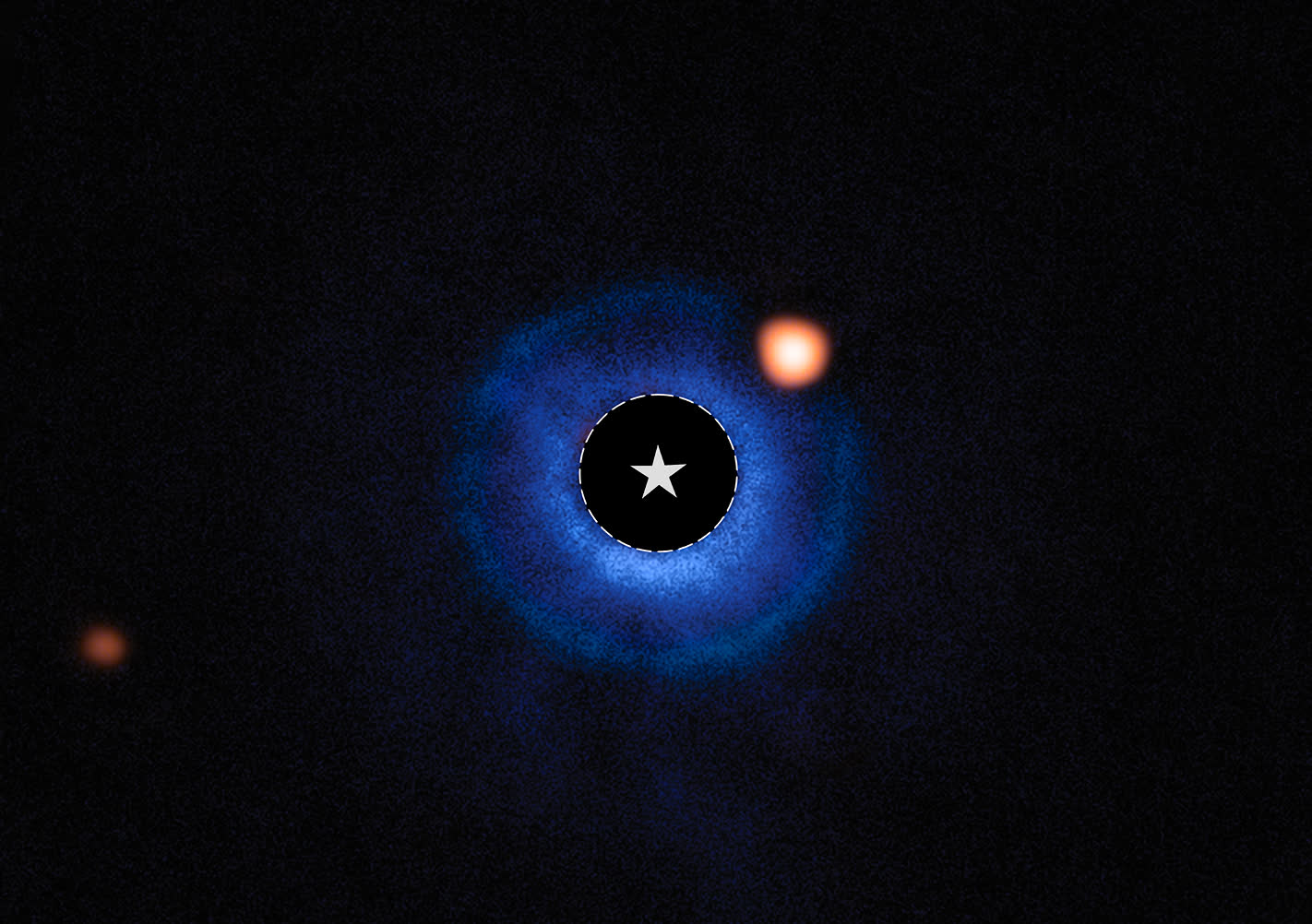Serving tech enthusiasts for over 25 years.
TechSpot means tech analysis and advice you can trust.
What just happened? The James Webb space telescope has captured what is likely to be the first exoplanet discovered using the advanced observatory. An international team of astronomers uncovered the planet candidate in the debris field surrounding TWA 7, a low-mass star in the constellation Antlia that is located around 111 light-years away from Earth.
They used Webb's mid-infrared instrument to suppress the overwhelming glare from the host star, revealing faint objects that would have been too dim to spot otherwise.
The technique revealed what is believed to be a previously undetected exoplanet orbiting the star. TWA 7 b, as it has been named, is within the region where astronomers would expect to find a planet of its mass. Its brightness and color also line up with theoretical predictions for a young, cold, Saturn-mass planet.
The above image is a composite created using data from ESO's Very Large Telescope and Webb's MIRI. The host star, TWA 7, is marked with a circle and a star symbol. The blue hue around it represents data from the VLT Sphere instrument and shows the debris field around the star, while Webb's MIRI data is shown in orange. The top-right orange spot is the new planet candidate; the other orange spot on the bottom left is likely an unrelated background star.
It is still early days, but an initial analysis by the team suggests we could be looking at a planet with a mass about 0.3 times that of Jupiter and a temperature of around 120 degrees Fahrenheit (47 degrees Celsius) – well within the Goldilocks habitable range. The distance between the object and its host star is about 50 times the distance Earth is from the Sun. If confirmed, it would be the lightest planet ever viewed using this technique outside of our solar system.
The team that discovered the candidate planet has published a paper on their findings in the journal Nature. It is titled, Evidence for a sub-Jovian planet in the young TWA 7 disk.









 English (US) ·
English (US) ·